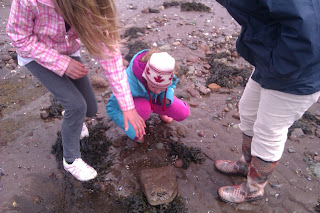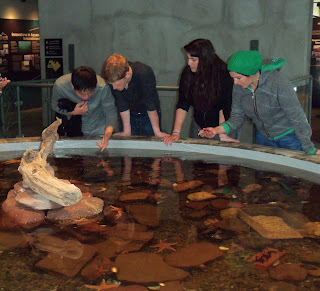Today we had eight, excited grade 5 students from the Touchstone Community School in Rothesay visit the Huntsman for a day filled with marine biology. They started the day learning all about plankton and its importance at the base of the marine food chain. The students were amazed to see all the microscopic plants and animals that live in the Bay of Fundy. They had fun playing plankton bingo, with one student finding 14 different species of plankton! Great job!
Next the group had the chance to work with the live invertebrates including green crabs, hermit crabs and scallops. One student even found a pregnant green crab in the tank in the lab. She was pretty feisty!
After a quick lunch the students conducted an experiment to see how size affected the flipping rate of sea stars and urchins. Most of the animals were pretty fast except for one sea star that took over eight minutes to flip back over. The students had a taste of the joys and frustrations of using live animals for experiments!
To finish off the day everyone bundled up and headed for the beach to explore. The group did really well in their hunt, finding a couple of green crabs, a clam, mussels, periwinkles, sideswimmers and a blood worm.
Below are a some pictures from today.
A hermit crab posing nicely for the students.
Drawing a scallop.
A sea star on the move.
Who is hiding under this rock?

















































